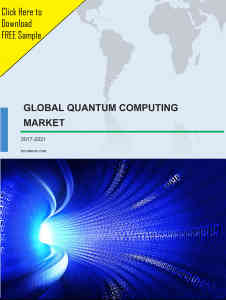Quantum computing has been around for several decades, in theory, if not in practical form. The types of computers we use today – from mobile phones, tablets, and laptops to supercomputers has undeniably been a driving force in smartening the world for decades. However, there are some complications that traditional computers will never be able to satisfactorily mitigate.
Consequently, we need something much more proficient than the supercomputers, that will be able to go upto the particle level of the requirement. This is where quantum physics and mechanics pitch in. While nature is filled with various manifestation of physics; quantum mechanical models play a pivotal role in understanding the problems associated with these manifestation at their fundamental level.
How do Quantum Computers work?
 While the classical computer is fundamentally based on transistors and largely relies on the encoding of information in bits which are either 0 or 1, the quantum computer takes advantage of quantum mechanical properties to process data using quantum bits or qubits. A qubit can be both a 0 or 1 at the same time or any range of numbers between 0 and 1.
While the classical computer is fundamentally based on transistors and largely relies on the encoding of information in bits which are either 0 or 1, the quantum computer takes advantage of quantum mechanical properties to process data using quantum bits or qubits. A qubit can be both a 0 or 1 at the same time or any range of numbers between 0 and 1.
Plus, in a traditional computer, each logic gate functions independently. Whereas, in a quantum computing technology, the qubits impact one another, which allows a quantum computer to process information far more proficiently than a classical computer.
Today’s quantum computing technology, however, is severely limited by the composition of their qubits, whose fragile 0-and-1 quantum states can be disrupted by magnetic fields or temperature fluctuations or stray electric charges. The more qubits are connected, the more easily they are upset.
How has IBM used its Quantum Computing to simulate a molecule?
Quantum theory could be the future of computing if they can compute using the properties of molecules that traditional digital computers cannot handle. Today’s quantum computing systems are a long way from realizing this goal. Nevertheless, a quantum computer at IBM has just passed a milestone: It performed the first calculations using molecules that contained more than just hydrogen and helium atoms – the usual participants in such scenarios.
The researchers used up to six qubits made of focused metals called superconductors, which can carry various levels of electric current concurrently, to analyze hydrogen, beryllium hydride (BeH2) and lithium hydride molecules. Initially, they encoded each molecule’s electron arrangement onto the quantum processor. Later, they deployed a specialized algorithm to push the simulated molecule into lower-energy states. Finally, they repeated the process until the quantum computer found the molecule’s lowest energy state. Neat, right?
There are still many errors that can inevitably creep into quantum calculations, leading to low accuracy as identified by researchers. However, the demonstration could aid scientists to understand known molecules better, discover new additions and ultimately, deploy a full fledged quantum computing Industry.



